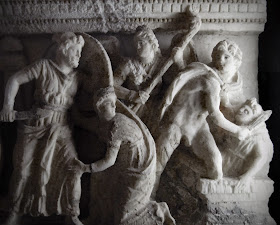 |
| dulce et decorum est from SPARK collaboration with Caroline Davies |
What is SPARK?
A participatory, inclusive creativity event….I've joined two rounds of SPARK--once, as a writer and the second time, as an artist. Next week I'm jumping in for a third round (again as an artist). Each time I've taken part, I experience the same excitement--hoping I can rise to the inspiration piece's challenge and knowing I have no other choice.
that’s SPARK, and we want you to join us!
Open to writers, musicians, and visual artists of all kinds, SPARK takes place four times each year.
During each 10-day project round, participants create a new piece of work using someone else’s art, writing, or music as inspiration. All resulting work is then displayed online, alongside the piece that inspired it.
The day-to-day work of writing is, more often than not, a solitary act. Collaborating in SPARK, I become part of a creative conversation, inspired by another's ideas.
The effect of inspiration lasts long after the project is complete. And, each time I have come away with new knowledge. Last November's pairing with poet Caroline Davies introduced me to the poetry of Wilfred Owen and to Caroline's own vivid poems. I'm forever chipping away at my irrational fear of poetry (let's call it poemaphobia). Finding poets whose work I connect with helps me grow as a reader and a writer. I have SPARK to thank for that.
If you're a writer or artist, come join me in the next round. Registration is open until November 22. There's still time!
And, whether you choose to participate or not, pop on over and take a look at the creative collaborations from previous SPARK rounds.
Enjoy!

